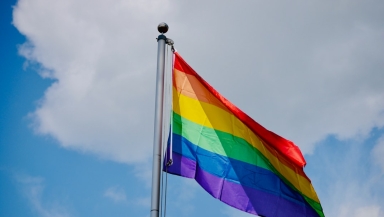
A decade after the Supreme Court’s landmark decision in Obergefell versus Hodges legalising same-sex marriage across the US, new data shows steady growth in the number of American households led by same-sex couples - both married and cohabiting.
According to recent figures released by the US Census Bureau, the number of households headed by married same-sex couples increased from 425,357 in 2015, to 774,553 in 2023.
Similarly, households led by same-sex partners who are not married rose from 433,539 to 536,894 over the same period.
Despite these gains, same-sex couples still make up a relatively small portion of all households.
Married same-sex couples represent just 1.3% of all married households, while same-sex cohabiting make up 5.6% of the total cohabiting population.
These figures are complemented by data from the American Community Survey and a new Pew Research Center survey conducted in January 2025 on a sample of 1,154 LGBTQ adults either married or cohabiting with a same-sex partner, which sheds light on how LGBTQ adults view their relationships and the motivations behind getting married or moving in together.
While love and companionship remain central reasons, a majority of married LGBTQ adults (64%) cited legal rights and benefits as a key factor in their decision to marry. Among those over 50, that figure climbs to 74%.
The analysis also reveals patterns in the social and economic characteristics of same-sex couples.
Same-sex married households, especially those made up of two men, are more likely to have higher educational attainment.
Forty per cent of male same-sex married couples have both partners holding a bachelor’s degree, compared to 32% of heterosexual couples.
Income levels reflect similar disparities: male same-sex couples reported a median household income of $172,689, significantly higher than the $121,900 for female same-sex couples and $121,000 for heterosexual couples.
Employment rates also differ. About three quarters of male same-sex married couples reported that both partners are employed, compared to 68% of female same-sex couples and 66% of different-sex couples.
Even among households without children, same-sex couples, especially men, are more likely to have dual earners.
However, family dynamics vary notably.
Slightly more than half of heterosexual married couples are raising children under 18, compared to 31% of female same-sex couples and only 10% of male same-sex couples.
Remarriage rates are also highest among women in same-sex marriages, with 34% of those households including at least one partner who has previously been married.
Regional differences emerge as well.
Same-sex couples tend to reside more frequently in the West (29% compared to 23%) and the Northeast (19% versus 17%) than their different-sex counterparts, who are more concentrated in the South (39% compared to 35%) and Midwest (21% compared to 17%).
This distribution may reflect both social acceptance and policy environments that differ across regions.
The Pew survey also explored relationship satisfaction.
A strong majority of respondents (92%) said their relationship was “going at least fairly well,” with 63% describing it as “very well.”
Among married same-sex couples, 69% reported high satisfaction, compared to 54% of those who are cohabiting.
These rates moderately exceed those reported by heterosexual couples in a similar Pew survey conducted in 2019.
That said, less than half of same-sex couples expressed strong satisfaction with certain aspects of daily life.
Only 45% were very satisfied with the division of household chores, 43% with communication, 43% with work-life balance, and just 33% with their sex life.
On household responsibilities and financial contributions, most respondents said tasks were either shared equally or they personally did more regardless of gender or marital status.
When it comes to the reasons couples moved in together, romantic connection again topped the list.
Love and companionship were cited as major reasons by 76% and 74% of respondents, respectively.
But convenience (37%), finances (36%), and testing the relationship (13%) also played roles for many.
Only 6% said the desire to raise children was a key factor in cohabiting.













